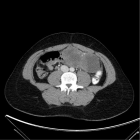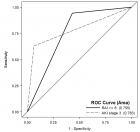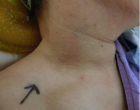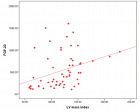Abstract
Research Article
Diagnosis of critical congenital heart defects in Iceland 2000-2014
Hallfríður Kristinsdóttir*, Þórður Þórkelsson, Hildur Harðardóttir and Gylfi Óskarsson
Published: 04 November, 2019 | Volume 4 - Issue 3 | Pages: 177-181
Critical congenital heart defects (CCHDs) are preferably diagnosed prenatally or soon after birth. Late diagnosis has been related to poorer prognosis. The aim of this study is to assess when CCHDs are diagnosed in Iceland and whether late diagnosis is a problem. All live born children in Iceland and foetuses diagnosed with CCHDs during the years 2000-2014 were included. CCHD was defined as a defect requiring intervention or causing death in the first year of life, or leading to abortion.
The total number of pre- and postnatal diagnosis of CCHDs was 188. Prenatal diagnosis was made in 69 of 188 (36.7%). Of 69 diagnosed prenatally 33 were terminated due to CCHD. Of the 155 live born children with CCHD, 36 (23.2%) had a prenatal diagnosis and 100 (64.5%) were diagnosed shortly after birth, before discharge from birth facility. 19 children (12.3%) were diagnosed late, that is after discharge from birth facility. Coarctation of the aorta was the most common CCHD diagnosed late (6/19).
Prenatal screening and newborn examination give good results in diagnosis of CCHDs in Iceland. Late diagnosis are relatively few, but both the number of prenatally diagnosed CCHDs and CCHDs diagnosed shortly after birth can be further improved.
Read Full Article HTML DOI: 10.29328/journal.jccm.1001062 Cite this Article Read Full Article PDF
References
- van der Linde D, Konings EE, Slager MA, Witsenburg M, Helbing WA, et al. Birth Prevalence of Congenital Heart Disease Worldwide: A Systematic Review and Meta-Analysis. J Am Coll Cardiol. 2011; 58: 2241-2247. PubMed: https://www.ncbi.nlm.nih.gov/pubmed/22078432
- Leirgul E, Fomina T, Brodwall K, Greve G, Holmstrøm H, et al. Birth prevalence of congenital heart defects in Norway 1994-2009-A nationwide study. Am Heart J. 2014; 168: 956-964. PubMed: https://www.ncbi.nlm.nih.gov/pubmed/25458661
- Stephensen SS, et al. Nýgengi og greining meðfæddra hjartagalla á Íslandi 1990-1999. Læknablaðið. 2002; 88: 281-287.
- Ewer AK, Middleton LJ, Furmston AT, Bhoyar A, Daniels JP, et al. Pulse oximetry screening for congenital heart defects in newborn infants (PulseOx): a test accuracy study. Lancet. 2011; 378: 785-794. PubMed: https://www.ncbi.nlm.nih.gov/pubmed/21820732
- Dawson AL, Cassell CH, Riehle-Colarusso T, Grosse SD, Tanner JP, et al. Factors Associated With Late Detection of Critical Congenital Heart Disease in Newborns. Pediatrics. 2013; 132: E604-E611. PubMed: https://www.ncbi.nlm.nih.gov/pubmed/23940249
- Liberman RF, Getz KD, Lin AE, Higgins CA, Sekhavat S, et al. Delayed Diagnosis of Critical Congenital Heart Defects: Trends and Associated Factors. Pediatrics. 2014; 134: E373-E381. PubMed: https://www.ncbi.nlm.nih.gov/pubmed/25070301
- Wren C, Reinhardt Z, Khawaja K. Twenty-year trends in diagnosis of life threatening neonatal cardiovascular malformations. Arch Dis Child Fetal Neonatal Ed. 2008; 93: F33-F35. PubMed: https://www.ncbi.nlm.nih.gov/pubmed/17556383
- Mouledoux JH, Walsh WF. Evaluating the Diagnostic Gap: Statewide Incidence of Undiagnosed Critical Congenital Heart Disease Before Newborn Screening With Pulse Oximetry. Pediatr Cardiol. 2013; 34: 1680-1686. PubMed: https://www.ncbi.nlm.nih.gov/pubmed/23595939
- Brown KL, Ridout DA, Hoskote A, Verhulst L, Ricci M, et al. Delayed diagnosis of congenital heart disease worsens preoperative condition and outcome of surgery in neonates. Heart. 2006; 92: 1298-1302. PubMed: https://www.ncbi.nlm.nih.gov/pubmed/16449514
- Bonnet D, Coltri A, Butera G, Fermont L, Le Bidois J, et al. Detection of transposition of the great arteries in fetuses reduces neonatal morbidity and mortality. Circulation. 1999; 99: 916-918. PubMed: https://www.ncbi.nlm.nih.gov/pubmed/10027815
- Calderon J, Angeard N, Moutier S, Plumet MH, Jambaqué I, et al. Impact of Prenatal Diagnosis on Neurocognitive Outcomes in Children with Transposition of the Great Arteries. J Pediatr. 2012; 161: 94-98. PubMed: https://www.ncbi.nlm.nih.gov/pubmed/22284567
- van Velzen CL, Haak MC, Reijnders G, Rijlaarsdam ME, Bax CJ, et al. Prenatal detection of transposition of the great arteries reduces mortality and morbidity. Ultrasound Obstet Gynecol. 2015; 45: 320-325. PubMed: https://www.ncbi.nlm.nih.gov/pubmed/25297053
- Mellander M, Sunnegardh J. Failure to diagnose critical heart malformations in newborns before discharge--an increasing problem? Acta Paediatr. 2006; 95: 407-413. PubMed: https://www.ncbi.nlm.nih.gov/pubmed/16720486
- Peterson C, Ailes E, Riehle-Colarusso T, Oster ME, Olney RS, et al. Late Detection of Critical Congenital Heart Disease among US Infants Estimation of the Potential Impact of Proposed Universal Screening Using Pulse Oximetry. Jama Pediatrics. 2014; 168: 361-370. PubMed: https://www.ncbi.nlm.nih.gov/pubmed/24493342
- de-Wahl Granelli A, Wennergren M, Sandberg K, Mellander M, Bejlum C, et al. Impact of pulse oximetry screening on the detection of duct dependent congenital heart disease: a Swedish prospective screening study in 39,821 newborns. BMJ. 2009; 338: 3037. PubMed: https://www.ncbi.nlm.nih.gov/pubmed/19131383
- Thangaratinam S, Brown K, Zamora J, Khan KS, Ewer AK. Pulse oximetry screening for critical congenital heart defects in asymptomatic newborn babies: a systematic review and meta-analysis. Lancet. 2012; 379: 2459-2464. PubMed: https://www.ncbi.nlm.nih.gov/pubmed/22554860
- Riede FT, Wörner C, Dähnert I, Möckel A, Kostelka M, et al. Effectiveness of neonatal pulse oximetry screening for detection of critical congenital heart disease in daily clinical routine-results from a prospective multicenter study. Eur J Pediatr. 2010; 169: 975-981. PubMed: https://www.ncbi.nlm.nih.gov/pubmed/20195633
- Meberg A, Andreassen A, Brunvand L, Markestad T, Moster D, et al. Pulse oximetry screening as a complementary strategy to detect critical congenital heart defects. Acta Paediatr. 2009; 98: 682-686. PubMed: https://www.ncbi.nlm.nih.gov/pubmed/19154526
- Freeman SB, Taft LF, Dooley KJ, Allran K, Sherman SL, et al. Population-based study of congenital heart defects in Down syndrome. Am J Med Genet. 1998; 80: 213-217. PubMed: https://www.ncbi.nlm.nih.gov/pubmed/9843040
- Irving CA, Chaudhari MP. Cardiovascular abnormalities in Down's syndrome: spectrum, management and survival over 22 years. Arch Dis Child. 2012; 97: 326-330. PubMed: https://www.ncbi.nlm.nih.gov/pubmed/21835834
- Carvalho JS, Allan LD, Chaoui R, Copel JA, DeVore GR, et al. ISUOG Practice Guidelines (updated): sonographic screening examination of the fetal heart. Ultrasound Obstet Gynecol. 2013; 41: 348-359. PubMed: https://www.ncbi.nlm.nih.gov/pubmed/23460196
- Chew C, Halliday JL, Riley MM, Penny DJ. Population-based study of antenatal detection of congenital heart disease by ultrasound examination. Ultrasound Obstet Gynecol. 2007; 29: 619-624. PubMed: https://www.ncbi.nlm.nih.gov/pubmed/17523161
- Carvalho JS, Mavrides E, Shinebourne EA, Campbell S, Thilaganathan B. Improving the effectiveness of routine prenatal screening for major congenital heart defects. Heart. 2002; 88: 387-391. PubMed: https://www.ncbi.nlm.nih.gov/pubmed/12231598
- Hoashi T, Miyata H, Murakami A, Hirata Y, Hirose K, et al. The current trends of mortality following congenital heart surgery: the Japan Congenital Cardiovascular Surgery Database. Interact Cardiovasc Thorac Surg. 2015; 21: 151-156. PubMed: https://www.ncbi.nlm.nih.gov/pubmed/25924867
- Rogers L, Brown KL, Franklin RC, Ambler G, Anderson D, et al. Improving Risk Adjustment for Mortality After Pediatric Cardiac Surgery: The UK PRAiS2 Model. Ann Thorac Surg. 2017; 104: 211-219. PubMed: https://www.ncbi.nlm.nih.gov/pubmed/28318513
Figures:

Figure 1
Similar Articles
-
Left Atrial Remodeling is Associated with Left Ventricular Remodeling in Patients with Reperfused Acute Myocardial InfarctionChristodoulos E. Papadopoulos*,Dimitrios G. Zioutas,Panagiotis Charalambidis,Aristi Boulbou,Konstantinos Triantafyllou,Konstantinos Baltoumas,Haralambos I. Karvounis,Vassilios Vassilikos. Left Atrial Remodeling is Associated with Left Ventricular Remodeling in Patients with Reperfused Acute Myocardial Infarction. . 2016 doi: 10.29328/journal.jccm.1001001; 1: 001-008
-
Mid-Ventricular Ballooning in Atherosclerotic and Non-Atherosclerotic Abnormalities of the Left Anterior Descending Coronary ArteryStefan Peters*. Mid-Ventricular Ballooning in Atherosclerotic and Non-Atherosclerotic Abnormalities of the Left Anterior Descending Coronary Artery. . 2016 doi: 10.29328/journal.jccm.1001002; 1:
-
Concentration Polarization of Ox-LDL and Its Effect on Cell Proliferation and Apoptosis in Human Endothelial CellsShijie Liu*,Jawahar L Mehta,Yubo Fan,Xiaoyan Deng,Zufeng Ding*. Concentration Polarization of Ox-LDL and Its Effect on Cell Proliferation and Apoptosis in Human Endothelial Cells. . 2016 doi: 10.29328/journal.jccm.1001003; 1:
-
Intermittent Left Bundle Branch Block: What is the Mechanism?Hussam Ali*,Riccardo Cappato. Intermittent Left Bundle Branch Block: What is the Mechanism?. . 2017 doi: 10.29328/journal.jccm.1001004; 2:
-
Congenital Quadricuspid Aortic Valve, a Rare Cause of Aortic Insufficiency in Adults: Case ReportCyrus Kocherla*,Kalgi Modi. Congenital Quadricuspid Aortic Valve, a Rare Cause of Aortic Insufficiency in Adults: Case Report. . 2017 doi: 10.29328/journal.jccm.1001005; 2: 003-007
-
Short and Medium-Term Evaluation of Patients in Coronary Post-Angioplasty: Préliminary results at the Cardiology Department of the Hospital University Aristide Le Dantec of Dakar (Senegal): Study on 38 CasesDioum M*,Aw F,Masmoudi K,Gaye ND,Sarr SA,Ndao SCT, Mingou J,Ngaidé AA,Diack B,Bodian M,Ndiaye MB,Diao M,Ba SA. Short and Medium-Term Evaluation of Patients in Coronary Post-Angioplasty: Préliminary results at the Cardiology Department of the Hospital University Aristide Le Dantec of Dakar (Senegal): Study on 38 Cases. . 2017 doi: 10.29328/journal.jccm.1001006; 2: 008-012
-
Indications and Results of Coronarography in Senegalese Diabetic Patients: About 45 CasesNdao SCT*,Gaye ND,Dioum M,Ngaide AA,Mingou JS,Ndiaye MB, Diao M,Ba SA. Indications and Results of Coronarography in Senegalese Diabetic Patients: About 45 Cases. . 2017 doi: 10.29328/journal.jccm.1001007; 2: 013-019
-
Procedure utilization, latency and mortality: Weekend versus Weekday admission for Myocardial InfarctionNader Makki,David M Kline,Arun Kanmanthareddy,Hansie Mathelier,Satya Shreenivas,Scott M Lilly*. Procedure utilization, latency and mortality: Weekend versus Weekday admission for Myocardial Infarction. . 2017 doi: 10.29328/journal.jccm.1001008; 2: 020-025
-
Spontaneous rupture of a giant Coronary Artery Aneurysm after acute Myocardial InfarctionOğuzhan Çelik,Mucahit Yetim,Tolga Doğan,Lütfü Bekar,Macit Kalçık*,Yusuf Karavelioğlu. Spontaneous rupture of a giant Coronary Artery Aneurysm after acute Myocardial Infarction. . 2017 doi: 10.29328/journal.jccm.1001009; 2: 026-028
-
Thrombolysis, the only Optimally Rapid Reperfusion TreatmentVictor Gurewich*. Thrombolysis, the only Optimally Rapid Reperfusion Treatment. . 2017 doi: 10.29328/journal.jccm.1001010; 2: 029-034
Recently Viewed
-
Trends in TeledentistryRudrakshi C*. Trends in Teledentistry. J Clin Adv Dent. 2020: doi: 10.29328/journal.jcad.1001014; 4: 004-005
-
Au26-35: A Special Geometrical Structure of Au33 (D2) Cluster with Highly Occupied - 14 Pairs of Double-State DegeneracyK Vishwanathan*. Au26-35: A Special Geometrical Structure of Au33 (D2) Cluster with Highly Occupied - 14 Pairs of Double-State Degeneracy. Ann Adv Chem. 2022: doi: 10.29328/journal.aac.1001035; 6: 063-080
-
Texture of Thin Films of Aluminum Nitride Produced by Magnetron SputteringStrunin Vladimir Ivanovich,Baranova Larisa Vasilievna*,Baisova Bibigul Tulegenovna. Texture of Thin Films of Aluminum Nitride Produced by Magnetron Sputtering. Int J Phys Res Appl. 2025: doi: 10.29328/journal.ijpra.1001106; 8: 013-016
-
Minimising Carbon Footprint in Anaesthesia PracticeNisha Gandhi and Abinav Sarvesh SPS*. Minimising Carbon Footprint in Anaesthesia Practice. Int J Clin Anesth Res. 2024: doi: 10.29328/journal.ijcar.1001025; 8: 005-007
-
On Friedman equation, quadratic laws and the geometry of our universeS Kalimuthu*. On Friedman equation, quadratic laws and the geometry of our universe. Int J Phys Res Appl. 2021: doi: 10.29328/journal.ijpra.1001041; 4: 048-050
Most Viewed
-
Evaluation of Biostimulants Based on Recovered Protein Hydrolysates from Animal By-products as Plant Growth EnhancersH Pérez-Aguilar*, M Lacruz-Asaro, F Arán-Ais. Evaluation of Biostimulants Based on Recovered Protein Hydrolysates from Animal By-products as Plant Growth Enhancers. J Plant Sci Phytopathol. 2023 doi: 10.29328/journal.jpsp.1001104; 7: 042-047
-
Sinonasal Myxoma Extending into the Orbit in a 4-Year Old: A Case PresentationJulian A Purrinos*, Ramzi Younis. Sinonasal Myxoma Extending into the Orbit in a 4-Year Old: A Case Presentation. Arch Case Rep. 2024 doi: 10.29328/journal.acr.1001099; 8: 075-077
-
Feasibility study of magnetic sensing for detecting single-neuron action potentialsDenis Tonini,Kai Wu,Renata Saha,Jian-Ping Wang*. Feasibility study of magnetic sensing for detecting single-neuron action potentials. Ann Biomed Sci Eng. 2022 doi: 10.29328/journal.abse.1001018; 6: 019-029
-
Pediatric Dysgerminoma: Unveiling a Rare Ovarian TumorFaten Limaiem*, Khalil Saffar, Ahmed Halouani. Pediatric Dysgerminoma: Unveiling a Rare Ovarian Tumor. Arch Case Rep. 2024 doi: 10.29328/journal.acr.1001087; 8: 010-013
-
Physical activity can change the physiological and psychological circumstances during COVID-19 pandemic: A narrative reviewKhashayar Maroufi*. Physical activity can change the physiological and psychological circumstances during COVID-19 pandemic: A narrative review. J Sports Med Ther. 2021 doi: 10.29328/journal.jsmt.1001051; 6: 001-007

HSPI: We're glad you're here. Please click "create a new Query" if you are a new visitor to our website and need further information from us.
If you are already a member of our network and need to keep track of any developments regarding a question you have already submitted, click "take me to my Query."


















































































































































